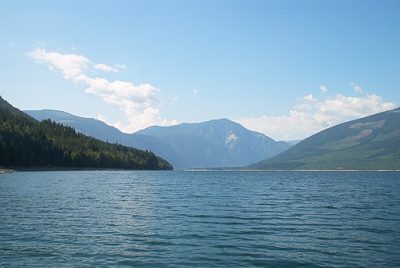Researchers and fisheries management have been adding nutrients to nutrient-deprived freshwater systems since the 1970s. These additions of nitrogen and phosphorous stimulate the growth of aquatic plant life, which sustains the tiny zooplankton that feed larger fish.
However, the usefulness of the practice under high water flow conditions has come under question, especially for reservoirs, controlled environments that can be drawn upon to power hydroelectric dams.
Researchers from the Institute for the Oceans and Fisheries (IOF) set out to discover whether nutrient additions truly help maintain fish populations in reservoirs with variable flows in a new study published in Fisheries Management and Ecology.
Because reservoirs are managed by people to produce energy, water flow changes within them are more dramatic than a typical lake and do not follow a natural cycle.
“There was concern that the nutrients were going in and then in a year when you needed more power, they’d just sweep right through the system and there would be no impact from them, so it was just throwing everything away,” said Patricia Woodruff, a zoology PhD student with the IOF and the study’s lead author.

Arrow Lake
“Arrow reservoir was formed in the late 1960s, and then two other reservoirs were formed upstream of it,” Woodruff said. “What happens in that case is a lot of the natural stream flow and a lot of the natural nutrient flow get trapped upstream and don’t make it into the downstream reservoirs.”
In the 1990s, Arrow Lakes Reservoir had so few nutrients, fisheries were collapsing, prompting a new experiment to manually release nutrients.
The researchers’ model simulated various amounts of nutrient additions paired with combinations of high, medium and low water-flows, and projected the abundance rates of Kokanee salmon, bull trout and rainbow trout under these different water-flow scenarios. Each of these fish are the basis for important recreational fisheries in the reservoir.

Juvenile bull trout
In the simulated Arrow Lakes Reservoir, fish fared better when nutrients were added to the water, regardless of whether the water flow was high or low.
Adding the correct amount of fertilizer to lake systems requires precision, according to Woodruff. Add too much of one nutrient, and the result is long chains of useless, inedible algae; add too much of another, and the result is a toxic blue-green algae bloom.
“You have to monitor it,” Woodruff said. “But it should work towards producing higher abundances and higher biomasses of the fish — as long as you’re careful.”
Tags: Ecopath with Ecosim (EWE), fish, fish stocks, freshwater, IOF students, Research